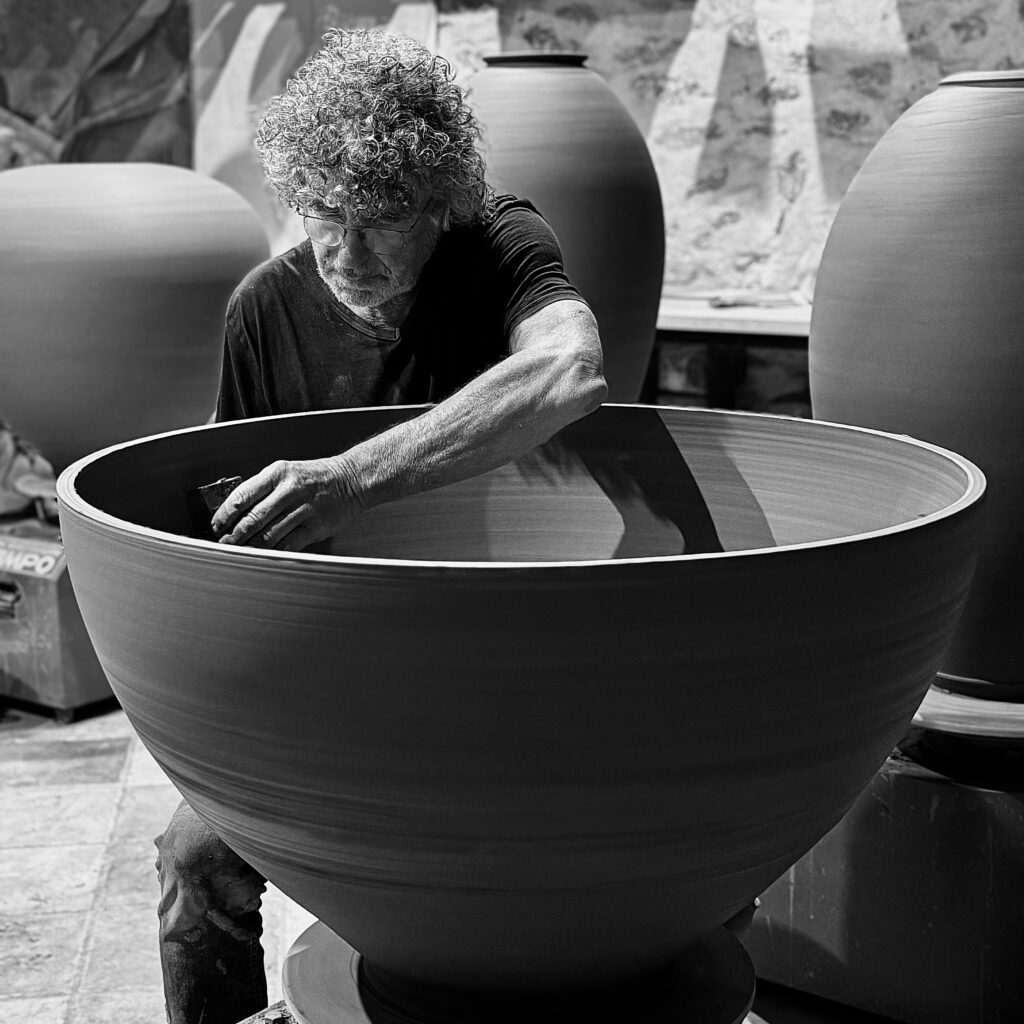 Join us in the heart Italy - in our mountaintop "castle town" of Monte Castello di Vibio for an intensive week of wood kiln construction with renowned potter and master kiln-builder, Rudie Delanghe!
Join us in the heart Italy - in our mountaintop "castle town" of Monte Castello di Vibio for an intensive week of wood kiln construction with renowned potter and master kiln-builder, Rudie Delanghe!
Here, deep among the mountains and ancient forests, Roman and Etruscan kilns still dot the clay-rich landscape of the Tiber Valley. Our participants live and work in an ancient mountain village made of stones, which is unchanged since the middle ages. We are surrounded by vineyards and olive groves -and steeped in traditions. This is truly a side of Italy that most travelers never experience!
In this landscape where past meets present, we will follow in the path of the ancestral crafts of the region as we construct a kiln that Rudie has designed and has himself built many times. The 1.5 meter wood fired trolley kiln we build together will constructed with over 2,000 refractory insulation bricks and provide a useable space 100 cm wide, 120 cm long, 130 cm high. This remarkably efficient kiln design is very economical in its use of wood and easy to fire by one person.
Building a wood-fired kiln is a complex process that requires both extensive knowledge and experience as well as careful planning. Rudie will select materials, weld our metal frames and trolley, and lend his direction and masonry expertise to the group as we build the kiln itself. Participants will learn principles that underlie the successful design of a wood kiln and the complex process behind its construction from a master European kiln-builder! This workshop is open to all levels of experience. Those interested in firing their work and experiencing the kiln in action, should consider our subsequent Workshop: Earth, Hands, and Fire: Building Epic Vessels for the Wood Kiln with Eva Champagne October 5- 19, 2025.(Be sure to inquire about reduced pricing for both workshops.)
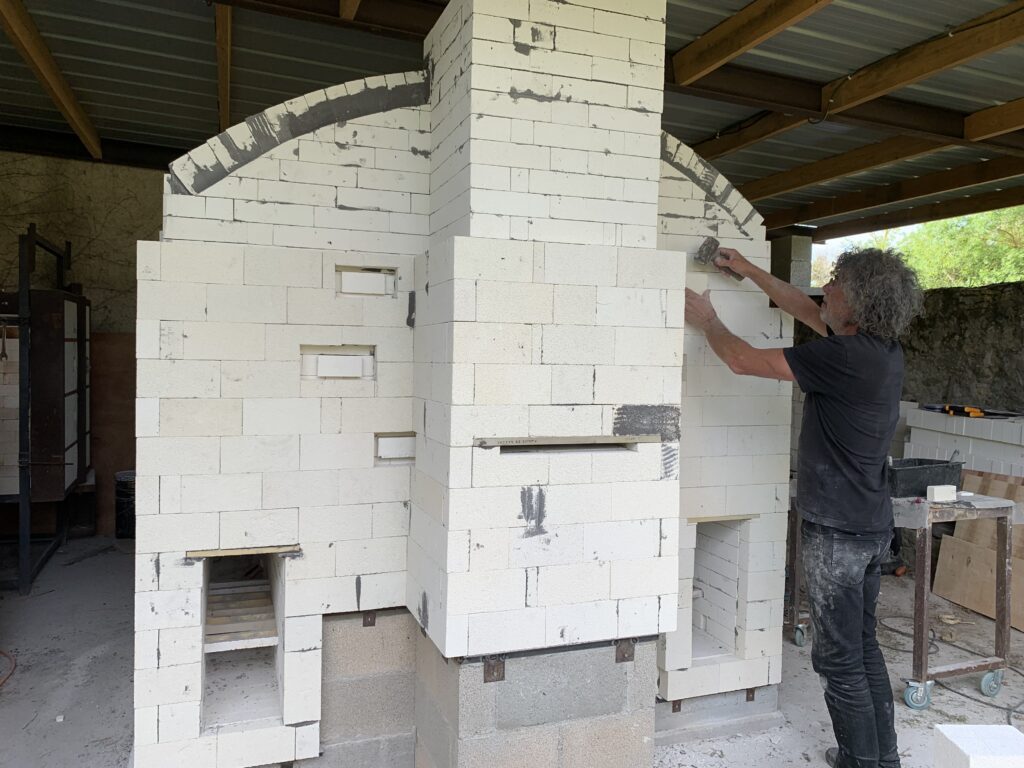 During the Workshop, participants will be housed in the remarkably well-preserved Umbrian hill town of Monte Castello di Vibio. Your workshop package is all-inclusive, providing welcome and departure services and airport transfer from the Rome Fiumicino, Leonardo Da Vinci Airport (FCO) aboard our comfortable private bus, single occupancy accommodations with shared bath (a wide range of upgrades with private bath are available), 3 meals per day Monday-Thursday, Prosecco brunch and dinner on Saturday and Sunday. Your workshop includes one excursion per week and many additional options are available on weekends for an additional fee. Of course, 24/7 access to facilities and 24/7 bi-lingual support are provided.
During the Workshop, participants will be housed in the remarkably well-preserved Umbrian hill town of Monte Castello di Vibio. Your workshop package is all-inclusive, providing welcome and departure services and airport transfer from the Rome Fiumicino, Leonardo Da Vinci Airport (FCO) aboard our comfortable private bus, single occupancy accommodations with shared bath (a wide range of upgrades with private bath are available), 3 meals per day Monday-Thursday, Prosecco brunch and dinner on Saturday and Sunday. Your workshop includes one excursion per week and many additional options are available on weekends for an additional fee. Of course, 24/7 access to facilities and 24/7 bi-lingual support are provided.
Would you like to master one of the most intriguing graphic techniques?
Join "Linocut and Book Illustration" course, which will open up a world of creative expression through linocut and the art of illustration!
You will learn about the history of linocut — from its origins to modern trends.
Understand how different types of strokes, lines, and dots affect the final image.
Gain practical knowledge of compositional rules and learn to convey space, light, and shadows through line work.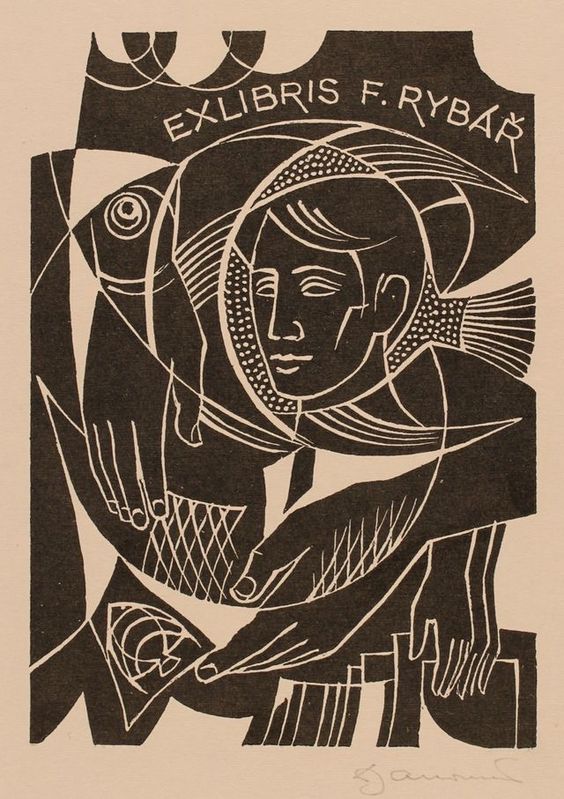
Immersion in the creative process:
The course is divided into three practical themes:
 You’ll learn how to turn the abstract ideas of poetry into concrete graphic elements, balancing both the text and imagery in a harmonious composition. This will be a opportunity to combine literature and graphic art, allowing participants to deepen their understanding of both mediums while creating a series of meaningful, artistic works.
You’ll learn how to turn the abstract ideas of poetry into concrete graphic elements, balancing both the text and imagery in a harmonious composition. This will be a opportunity to combine literature and graphic art, allowing participants to deepen their understanding of both mediums while creating a series of meaningful, artistic works.
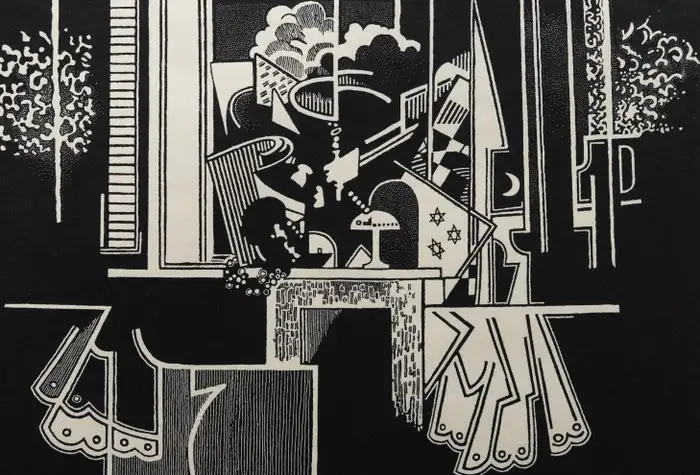
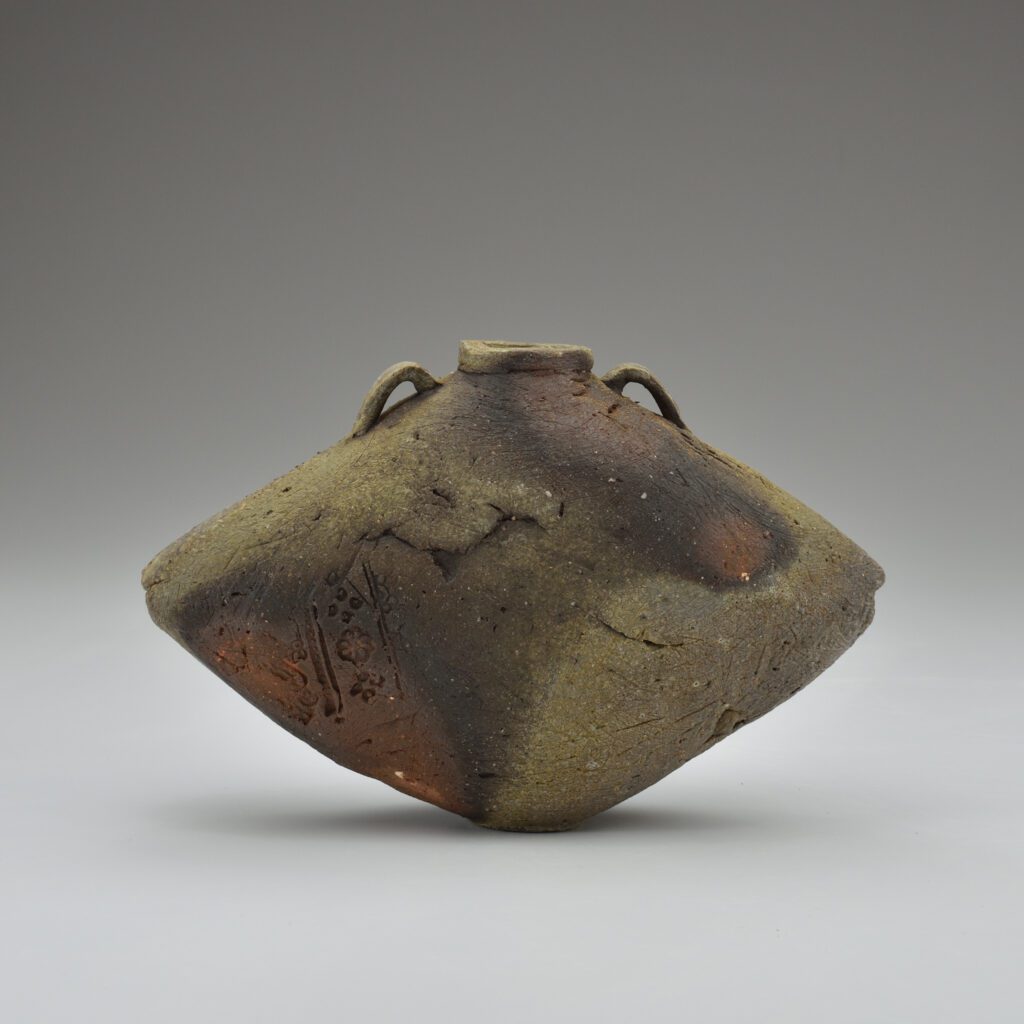 Join us for an immersive two weeks of creating meaningful ceramic vessels and firing them in ICA Italy’s new wood kiln. Be in the first group to fire this custom-built kiln!
Join us for an immersive two weeks of creating meaningful ceramic vessels and firing them in ICA Italy’s new wood kiln. Be in the first group to fire this custom-built kiln!
Throughout history ceramic vessels have told stories far more profound than the mere fact of storage or service. During this workshop, we plumb the depths of our own motivations to create vessels which carry our contemporary, personal narratives.
Taking inspiration from the landscape and historical-cultural milieu of Umbria, as well as the unique ideas and influences we each contain within us, we create a series of works that embody a specific moment, investigation, and touch. This workshop explores the vivid possibilities for expression when one adopts a “freestyle” approach to making. We create personal narrative and content through the interplay between form, surface embellishment, and wood firing atmosphere on a series of works inspired by vessels of antiquity.
Eva’s intuitive hand building method creates 3 dimensional “canvases” upon which to explore multiple techniques for mark making, printing, adding depth and texture— in effect, telling a visual story across the surface of each vessel, and then offering these highly expressive works to the new wood kiln, allowing it to have the final word in design.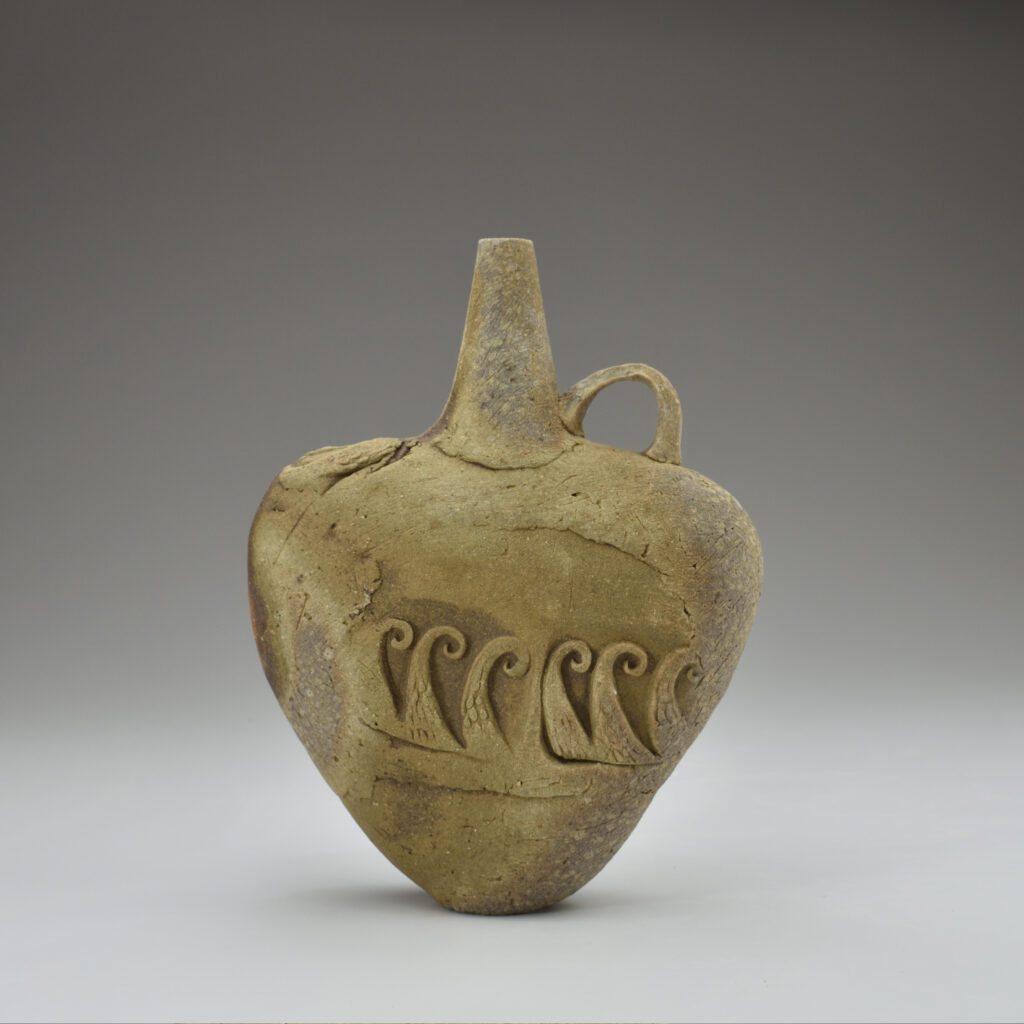
During our first week together, Eva offers step by step technical guidance, demonstrations, one on one mentoring, and open-forum discussion, as we create our series of vessels at varying scales. We quickly hone our hand building skills, develop tactile acuity, and push our ability to make clay do what we want and convey the thoughts and concerns we wish it to. We investigate numerous ways that the form and surface can be handled for expressive results, be your aim dramatic, vivid, or subtle.
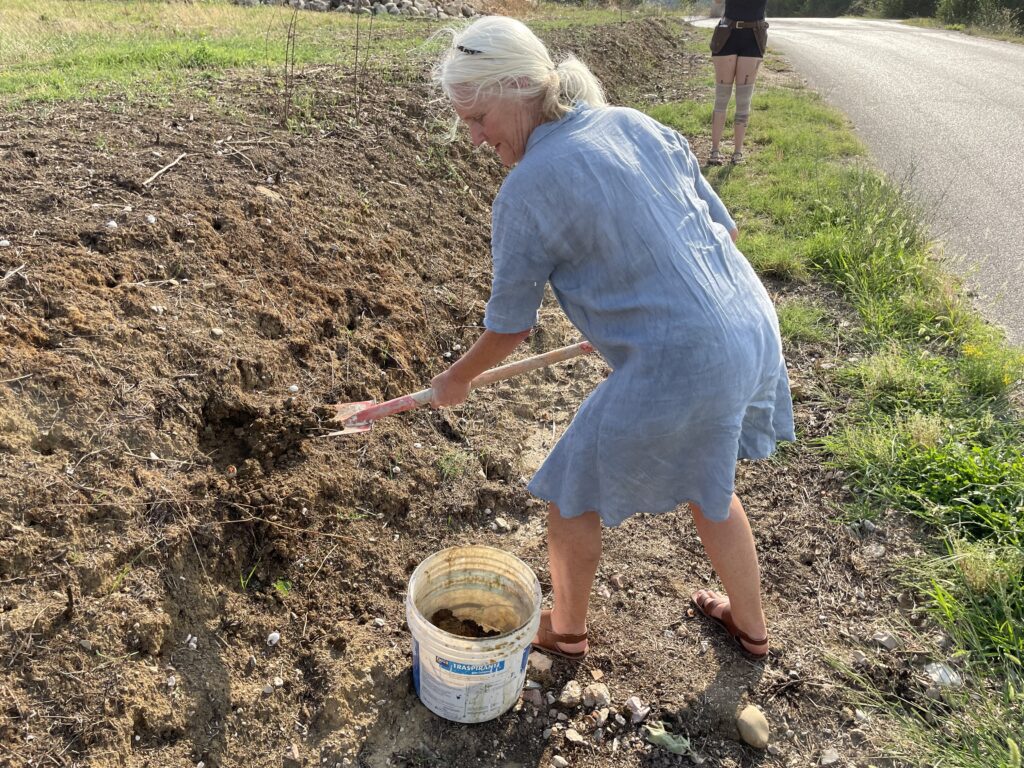 At the end of the first week, we dig up some local clay to work with, allowing us to compare the material qualities and firing results between clay bodies. During week two, we turn our attention to finishing touches to our series, drying them, and preparing for the wood firing. We discuss all aspects of this process, and everyone is hands-on during the inaugural firing itself, which takes about one day. We experience the exhilarating freedom of giving our works over to the wood kiln, since results cannot be entirely predicted. Our process can be described as a collaboration between the maker’s planning and execution, and the kiln’s sweeping endowments and editing: a meeting of intention and fortune.
At the end of the first week, we dig up some local clay to work with, allowing us to compare the material qualities and firing results between clay bodies. During week two, we turn our attention to finishing touches to our series, drying them, and preparing for the wood firing. We discuss all aspects of this process, and everyone is hands-on during the inaugural firing itself, which takes about one day. We experience the exhilarating freedom of giving our works over to the wood kiln, since results cannot be entirely predicted. Our process can be described as a collaboration between the maker’s planning and execution, and the kiln’s sweeping endowments and editing: a meeting of intention and fortune.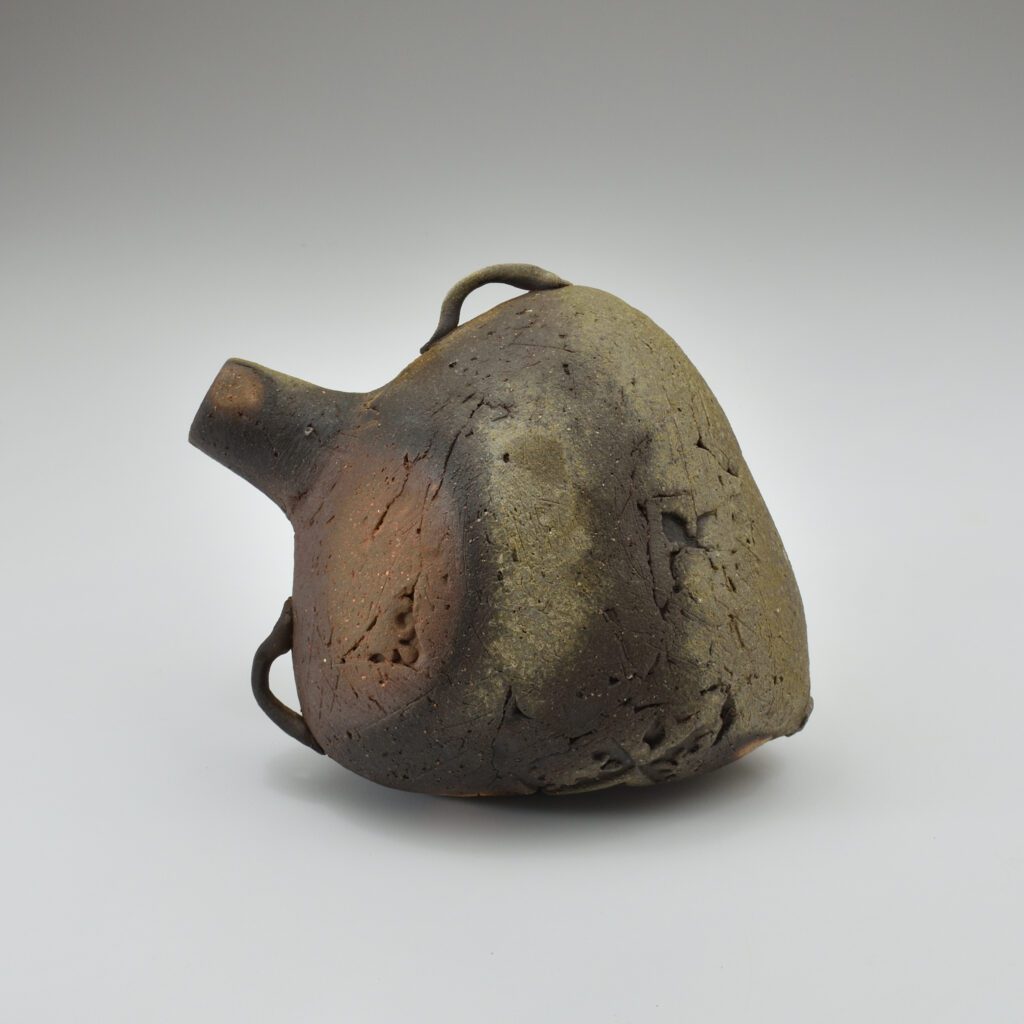
This intensive period of creative reflection and production undertaken in such a breathtaking setting as Monte Castello Di Vibio will impact your studio practice for a long time to come. This workshop is open to all levels of experience.
Participants will be housed in the remarkably well-preserved Umbrian hill town of Monte Castello di Vibio. Your workshop package is all-inclusive, providing welcome and departure services and airport transfer from the Rome Fiumicino, Leonardo Da Vinci Airport (FCO). Aboard our comfortable private bus, single occupancy accommodations with shared bath (a wide range of upgrades with private bath are available), 3 meals per day Monday-Thursday, Prosecco brunch and dinner on Saturday and Sunday (no meals are served on Friday, our excursion day. Your workshop includes one excursion per week and many additional options are available on weekends for an additional fee. Of course, 24/7 access to facilities and 24/7 bi-lingual support are provided.
 Ancient cultures resonate in Umbria and in particular was the cradle of Etruscan Civilization. In respect for these traditions, ICA is proud to offer an intensive -hands-on- studio pottery program on the techniques of Ancient Ceramics, focusing on Greek and Etruscan Pottery. Experts in these techniques will lead participants into one the most appreciated ancient forms in the history of ceramics: Greek and Etruscan Vases. Participants are accommodated in Monte Castello, and the workshop is to be held at our Deruta laboratory, in the Umbrian town renowned for its majolica traditions.
Ancient cultures resonate in Umbria and in particular was the cradle of Etruscan Civilization. In respect for these traditions, ICA is proud to offer an intensive -hands-on- studio pottery program on the techniques of Ancient Ceramics, focusing on Greek and Etruscan Pottery. Experts in these techniques will lead participants into one the most appreciated ancient forms in the history of ceramics: Greek and Etruscan Vases. Participants are accommodated in Monte Castello, and the workshop is to be held at our Deruta laboratory, in the Umbrian town renowned for its majolica traditions.
 The intensive workshop provides four days of "in-class" work studying decorative techniques of the famous black-figure and red-figure vessels focussing on analysis of specific examples such as the Krater of Euphronius, which describes the history of the Trojan War. The workshop includes lectures focusing on history of the medium with special attention to technical aspects and practical dimensions as well as aesthetic considerations -manifest in their classic shapes and colors.
The intensive workshop provides four days of "in-class" work studying decorative techniques of the famous black-figure and red-figure vessels focussing on analysis of specific examples such as the Krater of Euphronius, which describes the history of the Trojan War. The workshop includes lectures focusing on history of the medium with special attention to technical aspects and practical dimensions as well as aesthetic considerations -manifest in their classic shapes and colors.
Participants will work with shapes and decoration characteristic of the Greek Classical Period. The workshop will also focus on sources of the pigments which were harvested from the earth and decanted from clays. The colors we use will be derived from clays, just as in ancient times - participants will even paint their pots with brushes specially made with hare whiskers. Traditional techniques to be covered include: painting, scgraffito, sanding and firing - there will also be a traditional "egg" decoration test, in which color changes with heat, providing insight into a simple but historic decorative technique.
Throughout the workshop, participants will be housed in the remarkably well-preserved Umbrian hill town of Monte Castello di Vibio. Your workshop package is all-inclusive, providing welcome and departure services and airport transfer from the Rome Fiumicino, Leonardo Da Vinci Airport (FCO). Aboard our comfortable private bus, single occupancy accommodations with shared bath (a wide range of upgrades with private bath are available), 3 meals per day Monday-Thursday, Prosecco brunch and dinner on Saturday and Sunday (no meals are served on Friday, our excursion day. Your workshop includes one excursion per week and many additional options are available on weekends for an additional fee. Of course, 24/7 access to facilities and 24/7 bi-lingual support are provided.
 Closely linked to Zen culture, in which the beauty and harmony of simple things is exalted, the Raku technique was born in the 16th century as an art for the creation of bowls used during the traditional tea ceremony. It is characterized by a rapid production process and a particular process from which ceramics are obtained which differ in their characteristic cracking and coloring, giving life to unique pieces.
Closely linked to Zen culture, in which the beauty and harmony of simple things is exalted, the Raku technique was born in the 16th century as an art for the creation of bowls used during the traditional tea ceremony. It is characterized by a rapid production process and a particular process from which ceramics are obtained which differ in their characteristic cracking and coloring, giving life to unique pieces.
 In the 16th century, a type of rapid clay firing, called Raku, was discovered in Japan. This Japanese term has the meaning of "relaxed, pleasant, joy of living" and is traced back to the suburb of Kyoto where clay was extracted at the time. The birth of the Raku technique for creating ceramic objects seems to be attributed to a Korean craftsman, Chojiro. This ceramist, who mainly made tiles, began to use the particular clay, rich in silica sand, to speed up the production process of bowls for the tea ceremony.
In the 16th century, a type of rapid clay firing, called Raku, was discovered in Japan. This Japanese term has the meaning of "relaxed, pleasant, joy of living" and is traced back to the suburb of Kyoto where clay was extracted at the time. The birth of the Raku technique for creating ceramic objects seems to be attributed to a Korean craftsman, Chojiro. This ceramist, who mainly made tiles, began to use the particular clay, rich in silica sand, to speed up the production process of bowls for the tea ceremony.
The origin of Raku ceramics, with an improvised appearance, full of defects, almost unfinished, is closely connected to Zen thought which is inspired by simplicity, poverty in forms. All those that may seem like "imperfections" in Raku objects are instead exalted and considered "beautiful" in Zen culture. This aspect is also evident in the Kintsugi technique, which involves the repair of a vase or other object through the use of a precious metal: this Japanese art valorises "flaws" and becomes a metaphor of resilience.
The four-day course will cover: modelling, creation of sheet shapes, brush and airbrush glazing techniques, firing with crackle and metal effects. The course also includes 2 or 3 firings which are one of the most fascinating things about the technique.
 Throughout the workshop, participants will be housed in the remarkably well-preserved Umbrian hill town of Monte Castello di Vibio. Your workshop package is all-inclusive, providing welcome and departure services and airport transfer from the Rome Fiumicino, Leonardo Da Vinci Airport (FCO). Aboard our comfortable private bus, single occupancy accommodations with shared bath (a wide range of upgrades with private bath are available), 3 meals per day Monday-Thursday, Prosecco brunch and dinner on Saturday and Sunday (no meals are served on Friday, our excursion day. Your workshop includes one excursion per week and many additional options are available on weekends for an additional fee. Of course, 24/7 access to facilities and 24/7 bi-lingual support are provided.
Throughout the workshop, participants will be housed in the remarkably well-preserved Umbrian hill town of Monte Castello di Vibio. Your workshop package is all-inclusive, providing welcome and departure services and airport transfer from the Rome Fiumicino, Leonardo Da Vinci Airport (FCO). Aboard our comfortable private bus, single occupancy accommodations with shared bath (a wide range of upgrades with private bath are available), 3 meals per day Monday-Thursday, Prosecco brunch and dinner on Saturday and Sunday (no meals are served on Friday, our excursion day. Your workshop includes one excursion per week and many additional options are available on weekends for an additional fee. Of course, 24/7 access to facilities and 24/7 bi-lingual support are provided.
 Kurinuki (the term is Japanese) is a Japanese ceramic technique that embraces the natural surface of the clay and the individual imperfections that form in the intuitive process of making. Each vase is hand built and hand carved inside and out.
Kurinuki (the term is Japanese) is a Japanese ceramic technique that embraces the natural surface of the clay and the individual imperfections that form in the intuitive process of making. Each vase is hand built and hand carved inside and out.
The kurinuki process is a "sculptural" technique of volume formation: instead of adding material, as happens in the dovetail or slab construction, we start from the block of clay and gradually remove it, digging internally and modeling the external wall with the help of tools, until the desired shape is obtained. It is therefore a question, as in sculpture, of freeing a form enclosed in the formless.The idea of the artistic object may not be clear at the beginning: it is precisely the lack of clarity (not seeing clearly) that guides the path, that digs a path. What he obtains in the end is a symbol, something that continues to be linked to his origins, but like a child his destiny is autonomous.
 The program will also be a way to travel internally, allowing yourself to abandon yourself to this ancient art, creating unique objects linked to Zen culture with different stoneware clays. At the end, a tasting of Japanese tea will be offered on cups made of kurinuki.
The program will also be a way to travel internally, allowing yourself to abandon yourself to this ancient art, creating unique objects linked to Zen culture with different stoneware clays. At the end, a tasting of Japanese tea will be offered on cups made of kurinuki.
To complement the program, a visit to the famous Deruta, its museum dedicated to majolica and a Deruta artisan workshop.
 Throughout the workshop, participants will be housed in the remarkably well-preserved Umbrian hill town of Monte Castello di Vibio. Your workshop package is all-inclusive, providing welcome and departure services and airport transfer from the Rome Fiumicino, Leonardo Da Vinci Airport (FCO). Aboard our comfortable private bus, single occupancy accommodations with shared bath (a wide range of upgrades with private bath are available), 3 meals per day Monday-Thursday, Prosecco brunch and dinner on Saturday and Sunday (no meals are served on Friday, our excursion day. Your workshop includes one excursion per week and many additional options are available on weekends for an additional fee. Of course, 24/7 access to facilities and 24/7 bi-lingual support are provided.
Throughout the workshop, participants will be housed in the remarkably well-preserved Umbrian hill town of Monte Castello di Vibio. Your workshop package is all-inclusive, providing welcome and departure services and airport transfer from the Rome Fiumicino, Leonardo Da Vinci Airport (FCO). Aboard our comfortable private bus, single occupancy accommodations with shared bath (a wide range of upgrades with private bath are available), 3 meals per day Monday-Thursday, Prosecco brunch and dinner on Saturday and Sunday (no meals are served on Friday, our excursion day. Your workshop includes one excursion per week and many additional options are available on weekends for an additional fee. Of course, 24/7 access to facilities and 24/7 bi-lingual support are provided.
Join us in Italy for an inspiring workshop focused on building large-scale clay sculptures. This unique experience encourages experimentation in a safe, inclusive studio environment, allowing participants to push their technical boundaries without the pressure of keeping their work. We’ll troubleshoot technical issues together, fostering a spirit of collaboration and growth. In addition to hands-on building, you’ll spend a day in Florence, surrounded by iconic sculptures that showcase technical excellence. This immersive experience will not only expand your skills but also deepen your appreciation for large-scale art. We’ll also hold glaze and finishing demos featuring Trey’s under-glazing techniques as well as other surfaces for finishing sculpture. Participants are encouraged to bring small bisque ware pieces to glaze and finish. Don’t miss this opportunity to enhance your craft while exploring the beauty of Italy!
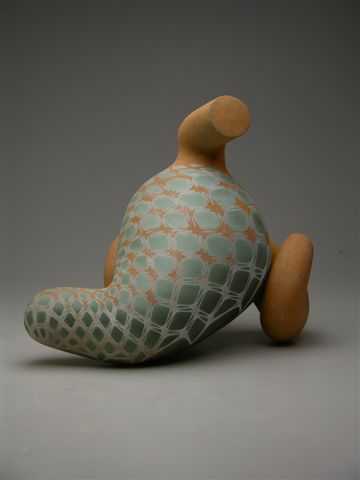 Participants will be housed in the remarkably well-preserved Umbrian hill town of Monte Castello di Vibio. Your workshop package is all-inclusive, providing welcome and departure services and airport transfer from the Rome Fiumicino, Leonardo Da Vinci Airport (FCO). Aboard our comfortable private bus, single occupancy accommodations with shared bath (a wide range of upgrades with private bath are available), 3 meals per day Monday-Thursday, Prosecco brunch and dinner on Saturday and Sunday (no meals are served on Friday, our excursion day. Your workshop includes one excursion per week and many additional options are available on weekends for an additional fee. Of course, 24/7 access to facilities and 24/7 bi-lingual support are provided.
Participants will be housed in the remarkably well-preserved Umbrian hill town of Monte Castello di Vibio. Your workshop package is all-inclusive, providing welcome and departure services and airport transfer from the Rome Fiumicino, Leonardo Da Vinci Airport (FCO). Aboard our comfortable private bus, single occupancy accommodations with shared bath (a wide range of upgrades with private bath are available), 3 meals per day Monday-Thursday, Prosecco brunch and dinner on Saturday and Sunday (no meals are served on Friday, our excursion day. Your workshop includes one excursion per week and many additional options are available on weekends for an additional fee. Of course, 24/7 access to facilities and 24/7 bi-lingual support are provided.
Early Bird Workshop Special: Register and pay in full before December 22, 2025 and save 10%! Just use Discount code: zejzwzeg when registering.
You may know the tragic story of Cassandra: she prophesied the truth but was destined not to be heard or believed. Often, we treat our creative voice in a similar way. While it is unique to every one of us, the question is do we leave space to hear and understand our muse’s song? “We must learn to be a soothsayer for our soul,” says Kirsten, “and listen beyond the din of disbelief in the head and the fear of being misunderstood in the heart.”
Let’s awaken and rewild the tale of our creative muse to give her voice again. This unique sculptural retreat combines technical ceramic figurative instruction and mixed media book arts to harness the creative voice that sings in us all. Studio instruction will be accompanied by site visits to inspire, such as the underground Etruscan dwellings in Orvieto, local antique markets, and the Monster Park outside Rome. As an incubator for soulful expression, Italy is full of myths, histories, and legends that echo in the art and landscape.
During this retreat Kirsten will guide the class to build a small torso to hang on the wall. Kirsten has a step-by-step approach to figurative ceramics that is easily accessible. Her class demonstrations are followed-up with individual tutorials, enabling her to help each student achieve their narrative vision. In addition, Kirsten will guide the class to expand and strengthen the narrative potential by making an assemblage fiber scroll book that will hang from the torso. Participants will walk away with a knowledge of techniques such as rusting, eco dye, photo transfer, collage, book arts, stitch and mark making.
This class is for ALL LEVELS: whether you have never touched clay but yearn to stretch your creative potential, or if you are a seasoned ceramicists that want to add a few new techniques to your toolbox.
Participants will be housed in the remarkably well-preserved Umbrian hill town of Monte Castello di Vibio. Your workshop package is all-inclusive, providing welcome and departure services and airport transfer from the Rome Fiumicino, Leonardo Da Vinci Airport (FCO). Aboard our comfortable private bus, single occupancy accommodations with shared bath (a wide range of upgrades with private bath are available), 3 meals per day Monday-Thursday, Prosecco brunch and dinner on Saturday and Sunday (no meals are served on Friday, our excursion day. Your workshop includes one excursion per week and many additional options are available on weekends for an additional fee. Of course, 24/7 access to facilities and 24/7 bi-lingual support are provided.
Early Bird Workshop Special: Register and pay your deposit before January 15, 2025 and save 10%! Just use Discount code: zejzwzeg when registering.
 Mastering Still Life in Oil Painting: The Play of Light and Shadow with Daria Most
Mastering Still Life in Oil Painting: The Play of Light and Shadow with Daria MostWe invite you to discover the enchanting world of still life through the technique of oil painting! This course will help you not only master practical skills but also unlock your creative potential by working with everyday objects and conveying their essence through the interplay of light and sh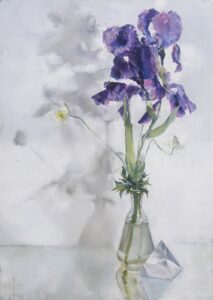 adow. The course is suitable for both beginners and intermediate artists.
adow. The course is suitable for both beginners and intermediate artists.
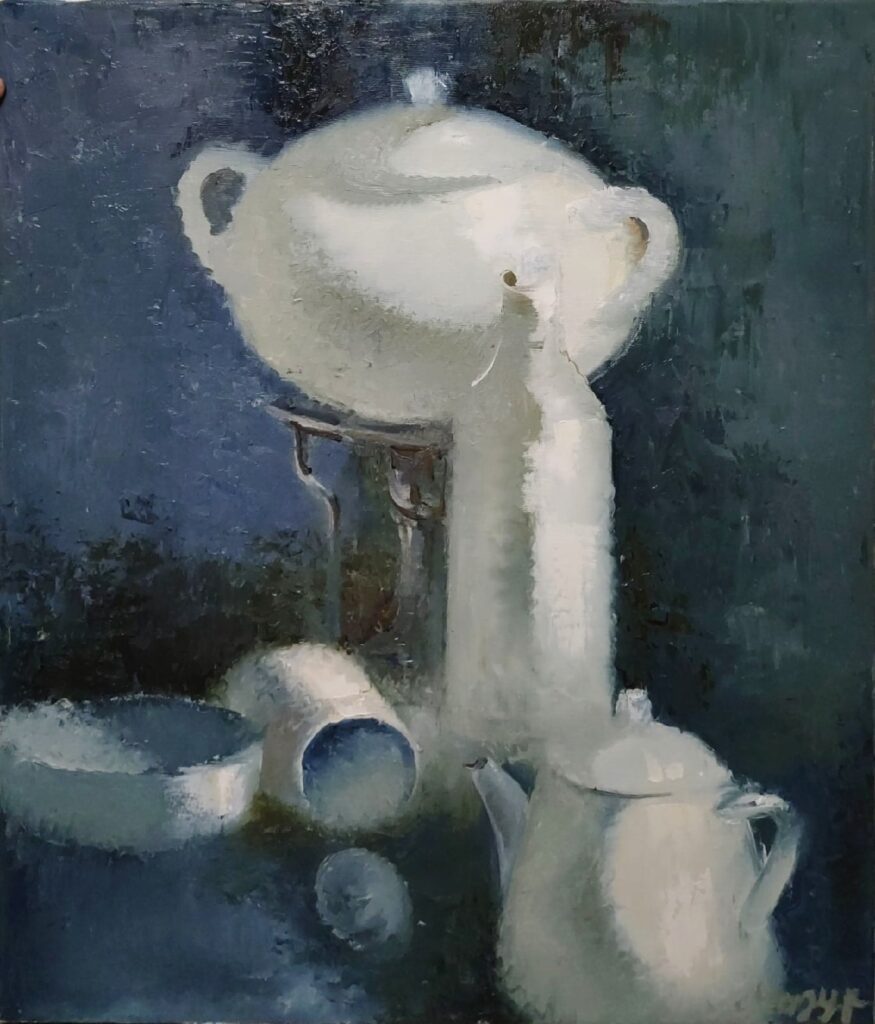 Course Program:
Course Program:
This two-week workshop is designed for all skill levels from complete beginner to advanced ceramic makers. It will focus on exploring the ancient Italian renaissance ceramic technique of tin-glazed earthenware, or Maiolica. While housed at the ICA students will have the opportunity to work with ancient clay materials, to explore the use of figuration, and myth and allegory on tiles or small vessels. Through studio exploration, group lectures and discussions, as well as the unique opportunity to view and study Italian Maiolica in some of its most famous centers for manufacturing in Deruta and Orvieto, students will create objects that continue and expand upon the rich traditions of tin-glazed pottery and narrative, illustrative approaches to self-expression.
Participants will be housed in the remarkably well-preserved Umbrian hill town of Monte Castello di Vibio. Your workshop package is all-inclusive, providing welcome and departure services and airport transfer from the Rome Fiumicino, Leonardo Da Vinci Airport (FCO). Aboard our comfortable private bus, single occupancy accommodations with shared bath (a wide range of upgrades with private bath are available), 3 meals per day Monday-Thursday, Prosecco brunch and dinner on Saturday and Sunday (no meals are served on Friday, our excursion day. Your workshop includes one excursion per week and many additional options are available on weekends for an additional fee. Of course, 24/7 access to facilities and 24/7 bi-lingual support are provided.
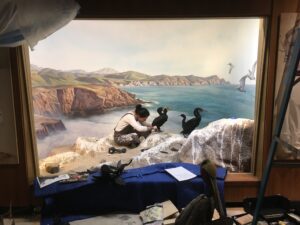 This intensive workshop will be a hands-on immersion into the art and science of taxidermy for conservation and public education. Students will create taxidermy birds and mammals with techniques used in museums, utilizing custom forms and advanced methods for accuracy of any specimen they may work on in the future.
This intensive workshop will be a hands-on immersion into the art and science of taxidermy for conservation and public education. Students will create taxidermy birds and mammals with techniques used in museums, utilizing custom forms and advanced methods for accuracy of any specimen they may work on in the future.
Students will learn to skin animals, prepare skins, read reference materials, create custom forms/armatures, pose animals, assemble specimens, groom and finish the pieces for realism. We will also be teaching advanced techniques such as creating death-masks and molding & casting head forms in order to make both 3D reference and provide an incredibly accurate facial structure.
Our goal is that students leave with both finished work and the ability to practice the craft of taxidermy themselves.
All specimens will be by products from other uses; hunting for food or non-native pest control.
Participants will be housed in the remarkably well-preserved Umbrian hill town of Monte Castello di Vibio. Your workshop package is all-inclusive, providing welcome and departure services and airport transfer from the Rome Fiumicino, Leonardo Da Vinci Airport (FCO). Aboard our comfortable private bus, single occupancy accommodations with shared bath (a wide range of upgrades with private bath are available), 3 meals per day Monday-Thursday, Prosecco brunch and dinner on Saturday and Sunday (no meals are served on Friday, our excursion day. Your workshop includes one excursion per week and many additional options are available on weekends for an additional fee. Of course, 24/7 access to facilities and 24/7 bi-lingual support are provided.
This is a 2 week class covering both birds and mammals.
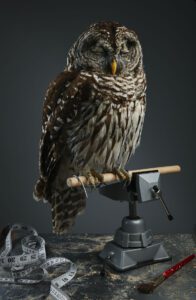
Bird taxidermy is its own unique craft requiring anatomical knowledge, technical skill and an artistic sensibility. In this intensive workshop, we will be teaching students all of these fundamentals utilizing museum techniques. This class is recommended for both beginners and those with taxidermy experience looking to learn Allis Markham’s museum techniques. Birds are also a perfect way to start learning taxidermy because students can go from frozen to finished all in one course. We will be working on Magpies and Crows locally collected as part of abatement / pest control; their deaths are not exclusively for this course. These species also lend themselves well to learning taxidermy and can create beautiful results with a lot of character. In fact, Allis has had the pleasure of creating and displaying both species for the Natural History Museum of Los Angeles.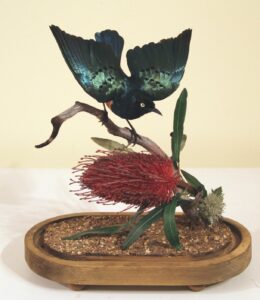
We will begin with a discussion of Avian anatomy, how to obtain legal specimens and general techniques for working on birds. Students will be learning the skills of: skinning, fleshing, wiring, wrapped body creation, mounting, posing and grooming. All supplies, tools and specimens will be provided for your class. After the end of this course, students will be able to take their own Crow or Magpie home on a base. After the course ends, every student will receive a list of documents, including a list of steps, supplies, tools and video resources all to assist in gaining the knowledge to start their own projects at home.
The ICArts team will also assist students with the logistics of getting their final pieces home safely.
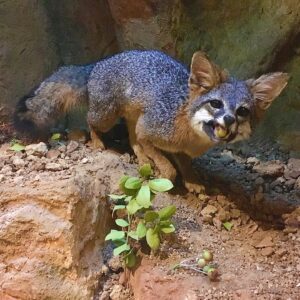 The nature of Mammal taxidermy is far different from that of birds. Students will find this course to be more sculpting-centered with a large attention to muscle detail. This class is recommended for both beginners and those with taxidermy experience looking for a way to learn mammal taxidermy and the art of creating custom-made mammal mounts utilizing museum techniques.
The nature of Mammal taxidermy is far different from that of birds. Students will find this course to be more sculpting-centered with a large attention to muscle detail. This class is recommended for both beginners and those with taxidermy experience looking for a way to learn mammal taxidermy and the art of creating custom-made mammal mounts utilizing museum techniques.
In this class, we will be focusing on the taxidermy of two common North American mammals, the Grey Fox and the Striped Skunk. These were collected in the United States as part of abatement / pest control; their deaths are not exclusively for this course.
While these specimens are native to the US, we have taken great care to make sure our materials are all commonly available in Europe and around the world. For instance, we will be learning the very custom technique of wrapping the bodies of the animals instead of ordering commercial forms which may not be available outside of the US, and are not nearly as accurate as creating a form for your specific specimen. This technique is used often for more exotic museum specimens due to the lack of commercial forms for them and the ability to create a more accurate form when custom-made.
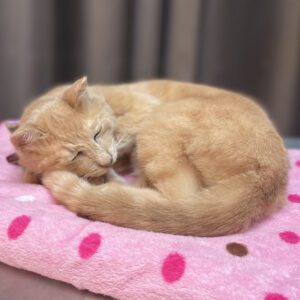
We will begin with a discussion of each animal’s anatomy, how to obtain legal specimens and general techniques for working on mammals. Students will start with tanned specimens (due to the process of tanning which requires weeks) but will be given a tutorial and documents on skinning and tanning.
In class, students will learn the skills of: measuring and wrapping forms, posing the forms for behavior and anatomical accuracy, custom-carving heads, Earliner-creation, skin fitting, creating/setting paws, sewing, facial details, and grooming/finishing work. We will also perform a demonstration on how to mold & cast for the creation death masks in order to create incredibly accurate headforms. All supplies, tools and specimens will be provided for your class. By the end of the class, students will take home their own Grey Fox or Skunk on a base. After the course ends, every student will receive a list of documents, including a list of steps, supplies, tools, formula for tanning, and video resources all to assist in gaining the knowledge to start their own projects at home.
The ICArts team will also assist students with the logistics of getting their final pieces home safely.
 This intensive workshop will be a hands-on immersion into the art and science of taxidermy for conservation and public education. Students will create taxidermy Mammals with techniques used in museums, utilizing custom forms and advanced methods for accuracy of any specimen they may work on in the future.
This intensive workshop will be a hands-on immersion into the art and science of taxidermy for conservation and public education. Students will create taxidermy Mammals with techniques used in museums, utilizing custom forms and advanced methods for accuracy of any specimen they may work on in the future.
Students will learn to skin animals, prepare skins, read reference materials, create custom forms/armatures, pose animals, assemble specimens, groom and finish the pieces for realism. We will also be teaching advanced techniques such as creating death-masks and molding & casting head forms in order to make both 3D reference and provide an incredibly accurate facial structure.
Our goal is that students leave with both finished work and the ability to practice the craft of taxidermy themselves.
The nature of Mammal taxidermy is far different from that of birds. Students will find this course to be more sculpting-centered with a large attention to muscle detail. This class is recommended for both beginners and those with taxidermy experience looking for a way to learn mammal taxidermy and the art of creating custom-made mammal mounts utilizing museum techniques.
In this class, we will be focusing on the taxidermy of two common North American mammals, the Grey Fox and the Striped Skunk. These were collected in the United States as part of abatement / pest control; their deaths are not exclusively for this course. While these specimens are native to the US, we have taken great care to make sure our materials are all commonly available in Europe and around the world. For instance, we will be learning the very custom technique of wrapping the bodies of the animals instead of ordering commercial forms which may not be available outside of the US, and are not nearly as accurate as creating a form for your specifi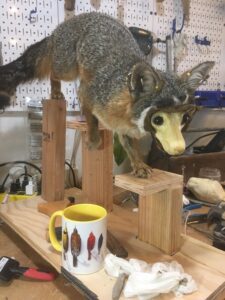 c specimen. This technique is used often for more exotic museum specimens due to the lack of commercial forms for them and the ability to create a more accurate form when custom-made.
c specimen. This technique is used often for more exotic museum specimens due to the lack of commercial forms for them and the ability to create a more accurate form when custom-made.
We will begin with a discussion of each animal’s anatomy, how to obtain legal specimens and general techniques for working on mammals. Students will start with tanned specimens (due to the process of tanning which requires weeks) but will be given a tutorial and documents on skinning and tanning.
In class, students will learn the skills of: measuring and wrapping forms, posing the forms for behavior and anatomical accuracy, custom-carving heads, Earliner-creation, skin fitting, creating/setting paws, sewing, facial details, and grooming/finishing work. We will also perform a demonstration on how to mold & cast for the creation death masks in order to create incredibly accurate headforms. All supplies, tools and specimens will be provided for your class. By the end of the class, students will take home their own Grey Fox or Skunk on a base. After the course ends, every student will receive a list of documents, including a list of steps, supplies, tools, formula for tanning, and video resources all to assist in gaining the knowledge to start their own projects at home.
The ICArts team will also assist students with the logistics of getting their final pieces home safely.